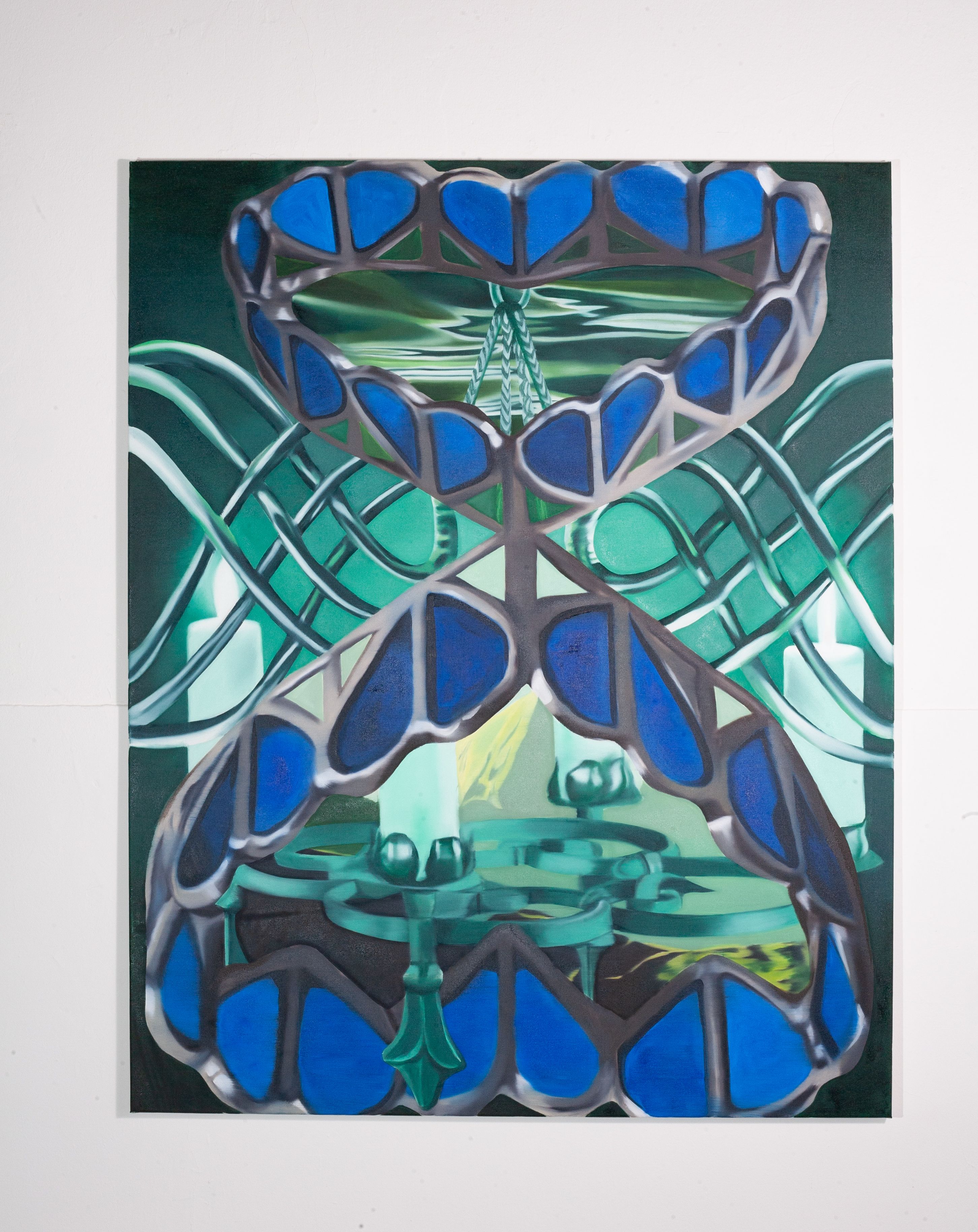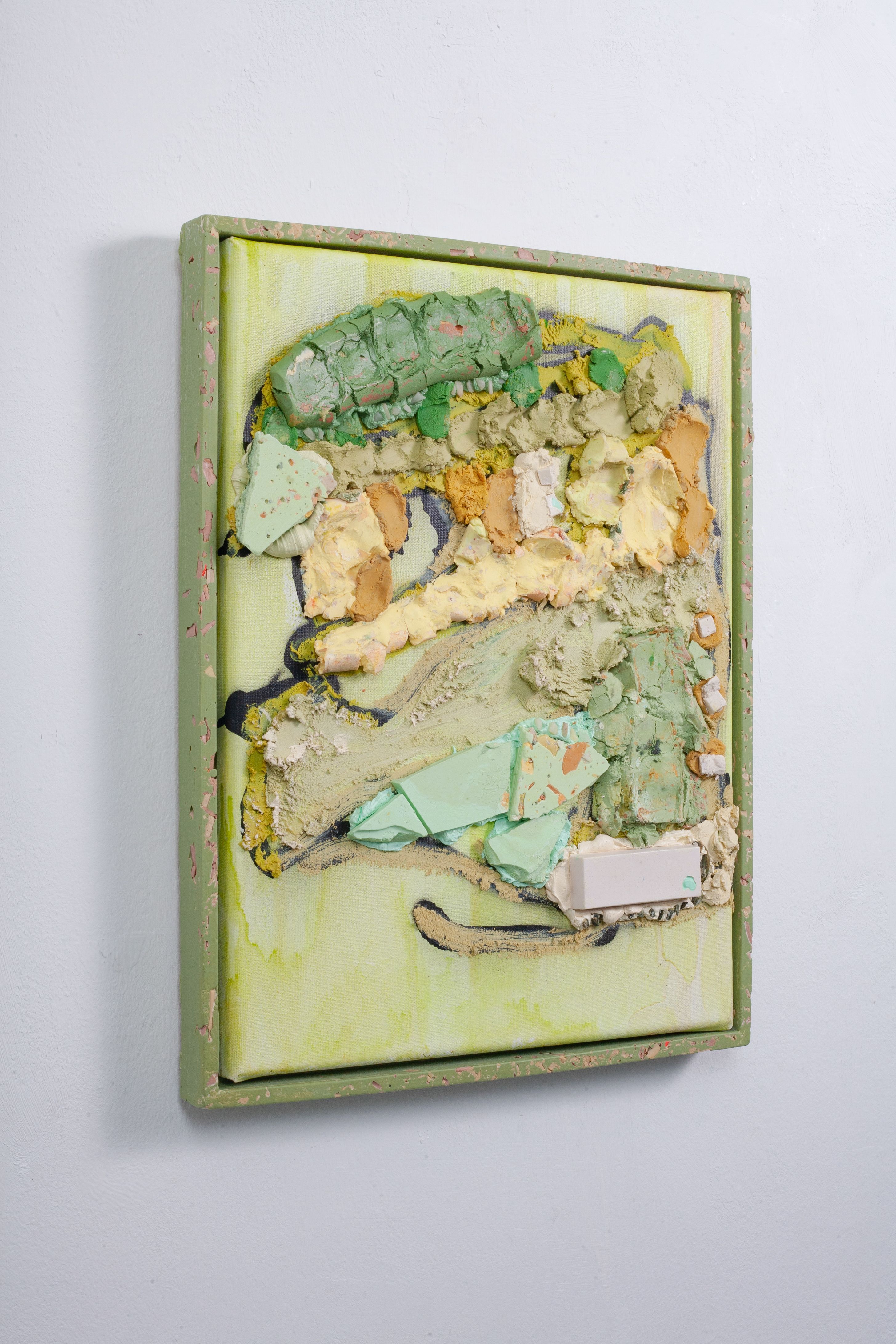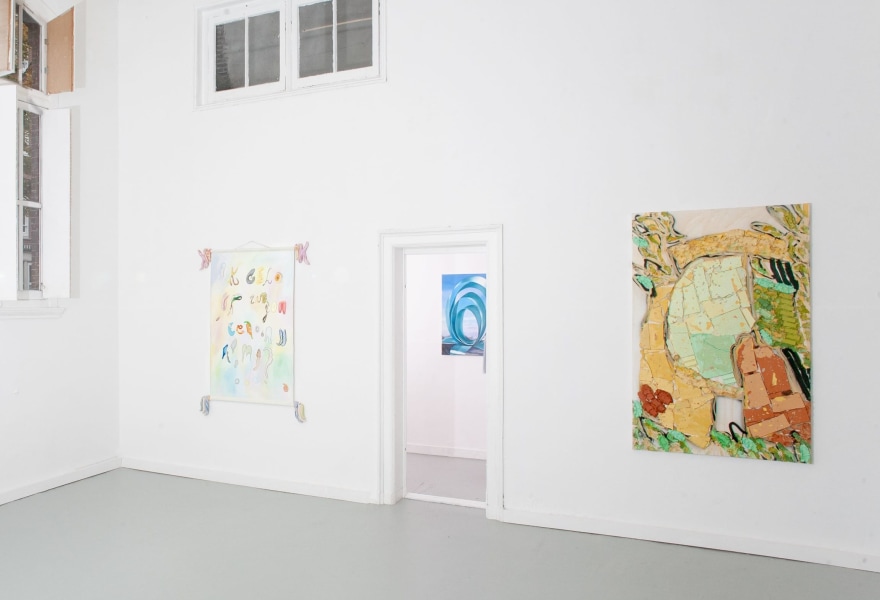27 october 2022, Wouter van den Eijkel
Painter’s painters
Mirjam Vreeswijk, Isa van Lier and Natacha Mankowski are in the Painter’s Painters exhibition, which is now on display at Galerie Fleur & Wouter. Three painters who know the medium’s tradition like the back of their hand, but who also bend it to their will through technical ingenuity, experimenting with homemade paint or by pushing the boundaries with sculpture.
Writer’s writers, actor’s actors and comedian’s comedians, the well-intentioned euphemism for artists who make their colleagues and a select group of initiates salivate, but are virtually unknown to the general public. Such makers can be found in almost all art forms, they are ahead of their time, have a different approach or a stylistic sophistication. Of course, there are also painter's painters. Van Lier, Vreeswijk and Mankowski are among them, each in their own way.
“It's a funny concept”, says Wouter van Herwaarden of Galerie Fleur & Wouter, “of course you look for artists to fit the concept of the exhibition, but with Mirjam Vreeswijk, with whom we have been working for some time, we noticed that her work is regularly purchased by artists. Many artists came to see her work at Art Rotterdam to see how she tackles some painterly challenges.”
It is not surprising that she has attracted the attention of colleagues, because Vreeswijk (NL, 1997) technical skills are exceptional, causing her to challenge herself by painting objects that are hard to paint. Something that a layman may not notice, but which colleagues, who are confronted with the same problems day in day out, immediately catch on.

Mirjam Vreeswijk, Time to pretend, 2022, Galerie Fleur & Wouter
Collages and landscapes
On Vreeswijk's canvases you will often find decorative objects that she finds or buys in thrift stores. Think of copper candlesticks, mirrors, ribbons, cloths and magazine clippings. She uses these to build collages in her studio. During the painting process, vistas are created to, for example, landscapes, deserted highways and glacial lakes.
This surprising combination of objects with landscapes makes it possible to place Vreeswijk's work in the surrealist tradition of Dali, Magritte and Miro. Her work has a similar mysterious quality. Vreeswijk also likes to play with reality. As a viewer, you become disoriented by the combination of recognizable objects with mystical landscapes and by the alternation of realism with trompe-l'oeil effects, a play of flat surfaces suggesting depth.

Mirjam Vreeswijk, Rebirth, 2022, Galerie Fleur & Wouter
A green haze
Consequently, it is not surprising that Vreeswijk is interested in film sets and theater screens, which have a similar effect: creating a twilight zone between reality and illusion. For the works that can be seen in Painter's Painters, Vreeswijk goes back to early black and white, horror films such as Nosferatu and Dracula. The ghostly green haze that covers the film image is reflected in the backgrounds.
The play with depth is most clearly reflected in Rebirth. In it, Vreeswijk painted a prop in the shape of a butterfly. The mobility of the insect contrasts here not only with the immobility of the set. She has added a second illusion by building the body and wings of the butterfly from stage cloth. The folds of the cloth follow the outline of the butterfly, creating an extra illusion of depth.

Natacha Mankowski, Likely, 2022, Galerie Fleur & Wouter
The excavated landscape
The Frenchwoman Natascha Mankowski (FR, 1986) who lives and works in Amsterdam takes a very different approach. What makes her work unique is that she paints landscapes with archaeological finds from the same landscape. She takes samples on the spot and then makes thick impasto paint from them in her studio.
Mankowski was once trained as an architect and worked for some time with the famous French architects Jean Nouvel and Vito Acconci. These architectural interests still permeate her work. She has a special interest in places where architects get their raw materials from, such as quarries.

Natacha Mankowski, Dressed in wild, 2022, Galerie Fleur & Wouter
A number of works from the Ophite series can be seen at Fleur & Wouter. The works are inspired by the Panormos quarry on Tinos, a Greek islands whihc is part of the Cyclades archipelago. The famous Verde Antico marble is mined here. Green marble ranging from olive to phthalo green, with a texture reminiscent of a snake's skin.
By using the impasto technique, the thick application of very full paint, Mankowski's paintings have a form of relief, giving them a sculptural quality. This also enables her to tell the story of the excavated landscape.
Beyond the edges of the canvas
A painting that extends beyond the edges of the canvas, that is the aim of Isa van Lier's work. It is an issue that not the least of people have considered: Van Gogh and Gauguin did it and Dali turned the silhouette of the couple in his Couple aux tetes pleine de nuages in the painting’s frame.

Isa van Lier, Abc, Believe in Me, 2022, Galerie Fleur & Wouter
Like Van Gogh and Gauguin, Van Lier was inspired by Japanese and Chinese prints. At Fleur & Wouter you can see works that go back to Japanese Kakejiku scrolls. Scroll paintings in which a sheet of papyrus, parchment or silk is pasted onto a roll of silk with wooden dowels on the top and bottom. Van Lier adds ceramic sculptures to the ends of the dowels.

Isa van Lier, Yin & Yang, 2022, Galerie Fleur & Wouter
Van Lier's compositions are not Hokusai-like landscapes, but consist of animated shapes and letters that are borrowed from the kawaii culture, a widely supported subculture around cuteness, and the Shinto faith. As in Japanese printmaking, Van Lier's compositions are flat. The various elements are placed in perfect harmony, so that as a viewer enter into some sort of dream world. By adding the sculptural forms to the edges, Van Lier makes that world physical again and takes you back to everyday reality.
Painter’s Painters with work by Isa van Lier, Natacha Mankowski and Mirjam Vreeswijk can be seen until 20 November at Galerie Fleur & Wouter, Amsterdam
